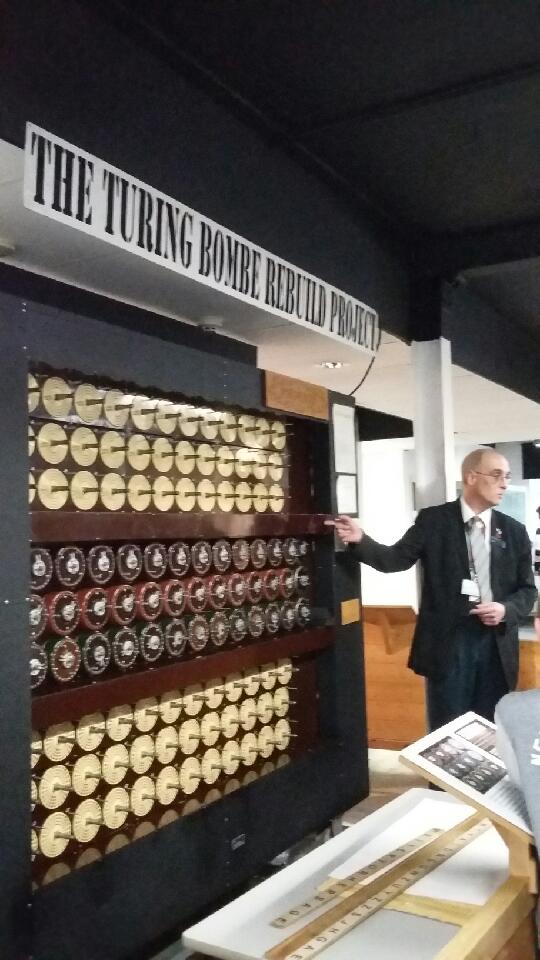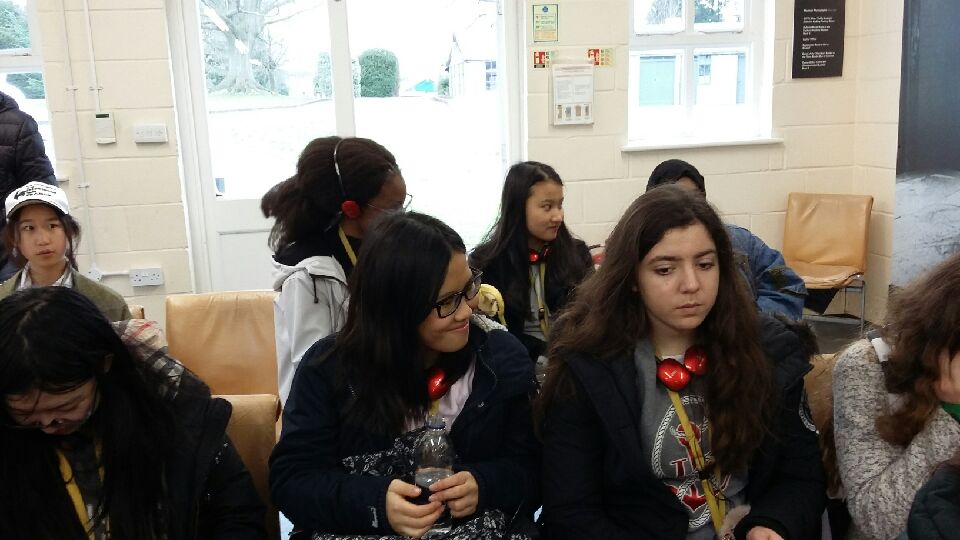Boarders visit Bletchley Park
Bletchley Park, a site shrouded in secrecy and mystery for the duration of World War II and decades afterwards, was the destination for a boarders’ trip on Sunday 11 March. Alongside Miss Jen Woodley, Housemistress, Mr Darren Kelly, Head of Mathematics, 13 boarders arrived at the site around midday.
Of course we now know the park’s ‘secret’: the site was used as the Government Code and Cypher School and during the war, Bletchley Park was home to teams of talented mathematicians, linguists and cryptanalysts who worked on cracking the communication codes used by German forces so that the British could intercept and use the intelligence to thwart Army, Air Force and Naval attacks.
 Rooms in the mansion and the huts around the site appeared as they would have done back in the 1940s. Scattered around the rooms were papers with rows of letters and the scribblings of workings out, magazines and newspapers from the era. It looked like the codebreakers had simply got up and left their desks and could be returning at any moment. Audio accounts from some of the men and women who worked at there at the time were played in some locations around the park, bringing to life the extraordinary work they had been a part of alongside snippets of their day to day lives.
Rooms in the mansion and the huts around the site appeared as they would have done back in the 1940s. Scattered around the rooms were papers with rows of letters and the scribblings of workings out, magazines and newspapers from the era. It looked like the codebreakers had simply got up and left their desks and could be returning at any moment. Audio accounts from some of the men and women who worked at there at the time were played in some locations around the park, bringing to life the extraordinary work they had been a part of alongside snippets of their day to day lives.
The mansion itself contained displays showing how the people at Bletchley Park worked under arduous conditions for hours on end, day after day, unable to discuss their work with anybody outside their hut. The girls also saw old programmes from concerts and plays the staff had put on when they did have free time. Another room had displays of how people were recruited but had to immediately sign the Official Secrets Act to protect the work being done at the park. Hut 8 in particular contained some interactive games to test one’s own code-breaking abilities, which went down well with the girls!
The whole group took a tour with a guide who explained more about life at Bletchley Park, pointing out the huts where major breakthroughs happened as he went along. One particularly interesting stop was at the Polish Memorial, which celebrates the work of Polish mathematicians like Marian Rejewski. Rejewski gave vital information about Enigma machines which were of great importance to the work at the park.
One of the most well-known British codebreakers was Alan Turing, who played a pivotal role in cracking the Enigma code, but who was also instrumental in the development of computer science. Despite his achievements, in the years after the war, Turing was a victim of prejudice and discrimination as a homosexual man living in that era and he sadly died in 1954 at the age of just 41. After a petition to receive a post-humous pardon, the British Government issued an apology in 2009 for the appalling treatment of a man whose accomplishments had not been duly recognised. It is said without the work Turing did throughout the war, the end would have been delayed by years. An exhibition is dedicated to his work, the untimely end to his life, and the legacy he left.
the work Turing did throughout the war, the end would have been delayed by years. An exhibition is dedicated to his work, the untimely end to his life, and the legacy he left.
As the afternoon drizzle descended on the park, students and staff left with a better understanding of how the persistence and imagination of a group of young citizens, working together for the greater good of their country, resulted in the freedom and technology we enjoy today.